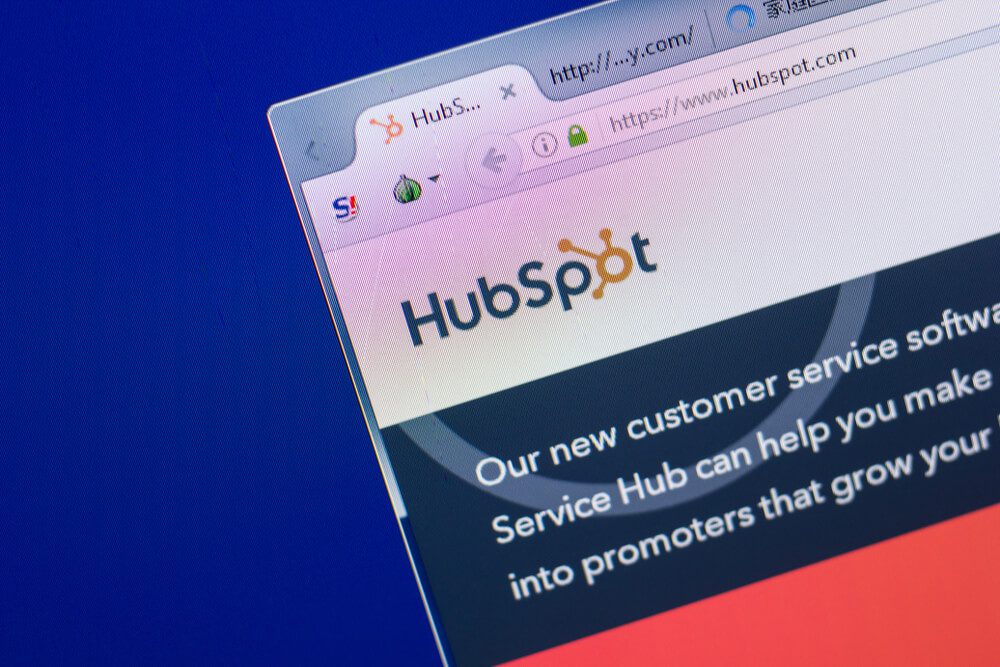
Unlocking Client Retention: Top 10 Relationship Marketing Tips for Professional Services
Client retention has never been more critical than in today's hyper-competitive market. This is especially true for professional services. Keeping existing clients makes the difference between growth and stagnation. Many turn to relationship marketing.
Businesses can build enduring customer relationships through techniques that go beyond transactional interactions. This is best done with help from a fractional CMO for professional services. Such an expert offers great pointers for relationship marketing, including the following:
- Understanding relationship marketing.
- Personalizing interactions.
- Value-driven communication.
- Client appreciation.
- Responsive communication.
- Using social media.
- Creating exclusive experiences.
- Gathering feedback.
- Building trust.
- Forging long-term relationships.
There is a lot to discuss, so get ready to take notes. Let’s go!
Want to know how to get a Chief Marketing Officer for your Professional Services Organization without the cost of a full-time employee? Watch this video to find out!
1. Understanding Relationship Marketing
Relationship marketing focuses on building strong connections with clients. It involves keeping a good relationship over time rather than just thinking about the next sale. The idea began catching on in the 1980s, when businesses realized keeping their existing clients was smart.
Businesses have moved from one-time interactions with customers to building lasting relationships. They now aim to give clients more than anticipated by forming a bond over time.
The better the relationship, the longer a client stays. Those who remain contribute to steady income and even refer new clients. In professional services, where competition is fierce, having loyal clients makes a big difference.
2. Personalizing Client Interactions

When interacting with clients, make sure that your approach aligns with their needs. This personalized approach is critical in forging long-lasting relationships. At the heart of this strategy is intimately knowing customers’ unique demands. You can do this with the help of technology.
Technology helps gather useful information about clients that helps refine how businesses interact with them. This makes each encounter meaningful and in line with what the client seeks.
Take, for example, HubSpot Agency Partners. The program helps partner agencies create communication strategies that resonate with each client.
Clients appreciate when services are tailored to them. In turn, this helps build trust and a sense of value, which is essential for keeping them over the long term.
3. Value-Driven Communication
What is value-driven communication? It means communicating with your customers in a way that transcends the mere delivery of services. Its purpose is to provide extra value through useful, easy-to-understand content. This is done in many ways. You might share helpful articles and guides that are pertinent to your offerings.
Aside from content, consider holding webinars and workshops. By sharing what you know about these events, you offer your audience more value. You might also showcase good practices and create a space for clients to interact, ask questions, and learn.
Regardless of your strategy, the goal remains the same: establish yourself as an authority. Make your firm a go-to place for knowledge, where clients are able to find helpful information to make smart decisions. Doing so improves the client's experience and encourages a culture of ongoing learning and engagement.
To create high-quality, valuable content and learn more about content marketing services, you may want to consult with an expert digital services agency.
4. Client Appreciation and Recognition

Showing clients that you value them is a big part of relationship marketing. One way to do this is by creating special programs to thank them.
Imagine a local dentist's office holding an appreciation day every year. On this day, they could offer free check-ups or discounts on services. This not only makes clients feel special but also encourages them to keep coming back.
Gifts during noteworthy times, such as holidays or business anniversaries, also expresses care. For example, sending a small gift or a card during the holidays leaves a good impression.
Sharing the success stories of clients, with their okay, is a good way to show appreciation. It tells clients that you are proud to work with them. For instance, if you have helped a client grow their business, sharing their story on your website celebrates their success.
5. Responsive and Open Communication
Keeping the lines of communication open is vital. This means regularly checking in with clients and making sure that you are reachable when needed. For instance, a tax consulting firm can set up monthly calls to discuss ongoing issues and upcoming tax deadlines. This keeps everyone on the same page and builds trust.
Responding swiftly is also key. When a client has a worry or a question, quickly answering them shows that you respect their time, business, and concerns. Suppose you manage a web design agency, and a client points out a problem on their website. If you quickly respond to resolve the problem, it shows that you are trustworthy.
6. Leveraging Social Media for Relationship Building

Social media is not only about posting updates. It is a fantastic venue to nurture relationships with clients. Creating a community on platforms such as Facebook or LinkedIn lets you more casually interact with clients.
Take, for example, a pet grooming business. It can post pet care advice on its social media pages and invite clients to share pictures of their furry friends.
In Addition, listening to what clients say on social media also provides useful insights. This helps you understand what clients like or what needs to be improved. For example, a coffee shop may ask followers for feedback on a new drink menu.
Sharing engaging content that educates or entertains helps build a good relationship. An insurance company, for instance, might share simple tips on how to save money on premiums. This type of content creates a useful conversation with clients.
7. Creating Exclusive Experiences
How do you create exclusive experiences? Offer your audience something unique — an item that they cannot find elsewhere. Doing this makes customers feel valued and special. Here are some ways to do this:
- Hosting exclusive events and webinars. An exclusive webinar where a renowned industry expert shares insights provides tremendous value to your clients. As an example, a law firm can host a seminar on the latest changes in labor laws exclusively for their clients.
- VIP programs and exclusive offers. A VIP program with special discounts or early access to new products or services fosters loyalty. For instance, an accounting firm could offer a VIP service where clients get a free consultation session every quarter.
Shazam, a music discovery app, rewards its customers for their loyalty through a loyalty program. In the program, they offer up to four months of a free Apple Music subscription to say thank you and to keep them engaged with the app.
8. Gathering and Implementing Feedback

Collect feedback from clients and implement their suggestions. This way, you see your business’s service delivery from their perspectives and can improve the quality accordingly. Moreover, it improves client satisfaction because it also makes them feel that their input is valued. Here are some strategies:
- Setting up systems for gathering client feedback. Use surveys or feedback forms to collect clients’ opinions about your services. Ecommerce businesses, for instance, can use sentiment analysis and text mining to process large volumes of feedback.
- Implementing feedback. Make changes in your services based on the feedback received. If clients suggest better communication, implementing a new communication tool or strategy may be beneficial.
Clearword helps customers create smart meeting summaries. They collect customer feedback to know what they are doing well and what is not working. This information is then used to make better business decisions, contributing to customer retention.
9. Building Trust through Transparency
Transparency in communication and actions cultivates trust in professional relationships. Clients' trust in the service provider grows when they understand the reasons behind decisions and actions.
A case study from The Myers-Briggs Company demonstrates the effect of transparency on trust within a leadership team. In this instance, a chief executive’s lack of transparency led to mistrust, creating silos within the team. The leader later worked on being more open about her decision-making processes, significantly improving the team's trust and overall dynamics.
Here are some key points when using transparency to build trust:
1. Open communication. As mentioned, sharing the rationale behind decisions and actions with clients helps build trust.
2. Consistent transparency. Consistently maintain a level of transparency to avoid creating mistrust or confusion.
3. Feedback loop. Encourage feedback from clients to ensure transparency and build trust over time.
Consider this scenario. A digital marketing agency shares its process, including successes and setbacks, with a client during a campaign. In doing this, the agency builds trust with the client by explaining the logic behind each step and being open about the campaign’s performance.
10. Long-Term Relationship Building

Three factors are critical to forging long-lasting relationships: understanding customers' needs, delivering value, and maintaining open communication. All three have been discussed above. Let us dive deeper.
A study from the Journal of Service Research highlighted the effect of long-term client relationships on the performance of business service firms. It showed that relationship-oriented firms achieve higher returns on investments than transaction-oriented ones.
Moreover, appreciating clients' worth and going beyond the necessities are essential to creating long-term bonds, as discussed in a publication by the Project Management Institute.
Below are key pointers for building long-term customer relationships:
1. Understanding client needs. Tailor your services to meet the unique needs and expectations of each client.
2. Delivering value. Go beyond the basics to provide additional value to clients, encouraging a long-term relationship.
3. Open communication. Maintain open channels of communication, ensuring that clients feel heard and valued.
To illustrate, a law firm goes beyond merely providing legal services. They offer educational webinars on legal topics relevant to its clients. By understanding their clients’ industries and challenges, they foster long-term relationships.
Summing Up
The essence of client retention in professional services lies in building enduring relationships, not just in making transactions. It involves deeply understanding clients’ needs, communicating value, and being responsive. Personalization, value-driven content, and transparency are key.
Special offerings such as client appreciation programs and exclusive experiences further solidify these bonds. Gathering and acting on client feedback shows that you are listening and building trust for the long haul. These are go-to strategies when aiming for lasting client relationships.
If you seek expert guidance in this endeavor, work with Digital Authority Partners (DAP). Call us today to learn how our fractional CMO for professional services marketing agency can elevate your relationship marketing strategies.
Want To Meet Our Expert Team?
Book a meeting directly here




